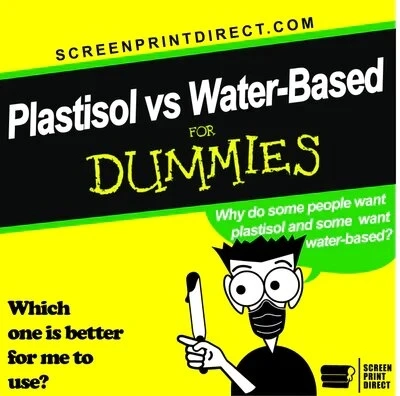Plastisol inks are extremely easy to use and convenient when you are on press. If you are new you can take your time printing and don't have to worry about the ink drying or clogging your print area. Plastisol, which sits on top of the shirt, allows for a nice vibrant punch in color but over time if not cured properly will begin to crack and eventually flake off.
PRO:
You get a nice and vibrant printWill not dry out even when left openYou can use any type of emulsionEasy learning curve for new printersCON:
You can feel it on the shirtYou may need different inks for polyester/ blendsYou need Plastisol ink cleanersWater-based inks are a totally different breed of ink. These inks become a part of the garment and do not sit on top of the garment like a plastisol ink would. Water-based inks produce an extremely soft hand as the ink penetrates the garment fibers. Discharge inks will require an activator to print on darker garments. Unlike plastisol inks, these inks will begin to dry if you leave them open, or unattended on the screen for a short period of time (you will get different results based on your environment.) Water-based inks are also perceived to be “eco-friendly” but do your due diligence on that one since some may contain pigments, binders, thickeners, etc. Now that's not to say that water-based inks are not "eco-friendly", they are just not 100% eco-friendly as people may think.
PRO:
These inks will become part of the garment so there is almost no feelThey are cleaner than plastisol inks Easy to clean upCON:
Can dry in screen and clog your meshRequires a longer cure time than plastisol inksYou need a water-resistant emulsionDischarge ink requires an activator which shortens shelf life to 8 hours when mixedIf there are any other questions or concerns you have regarding plastisol vs water-based inks feel free to reach out to us.
This post was originally written and published by Screen Print Direct


